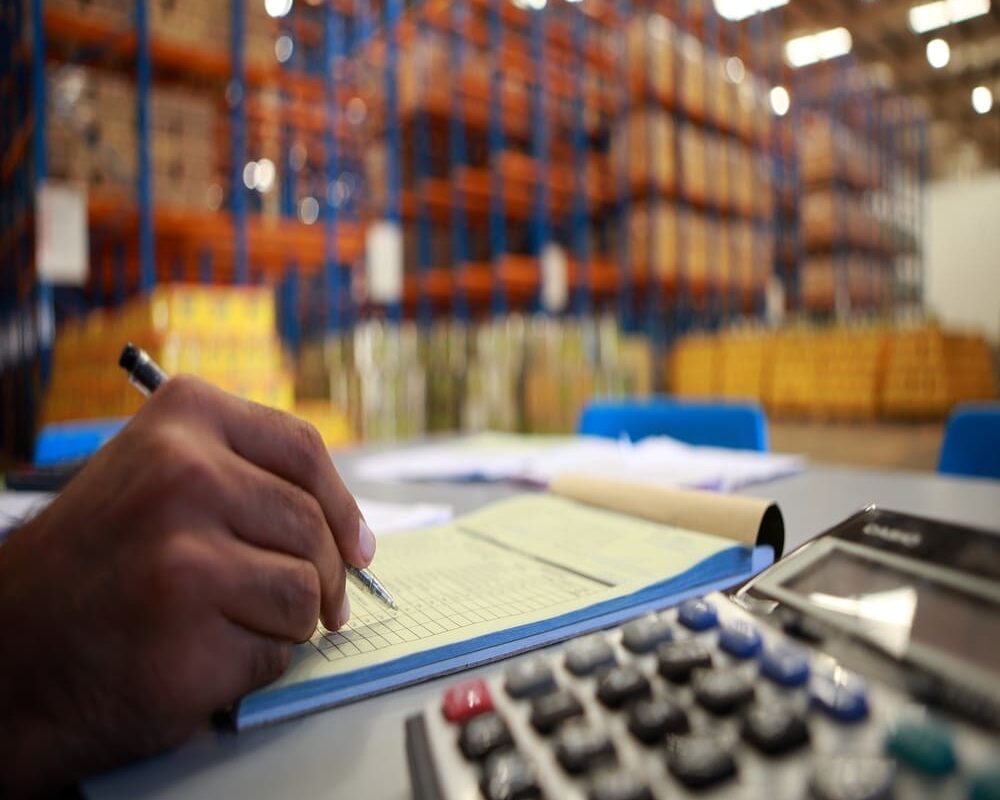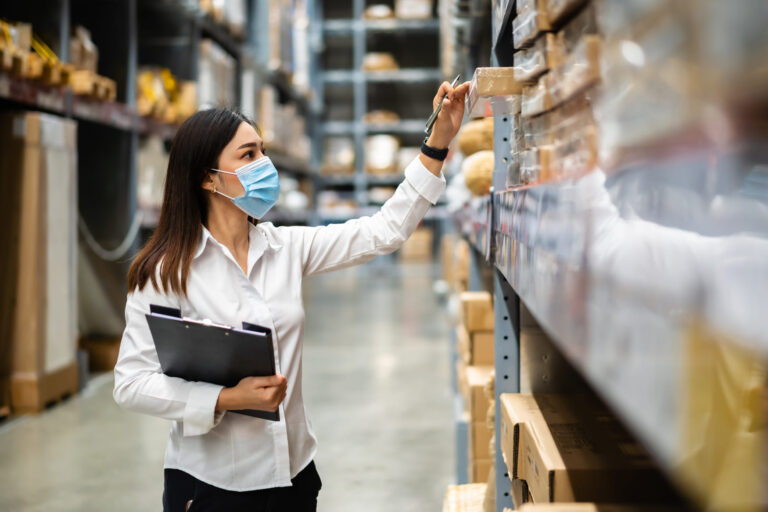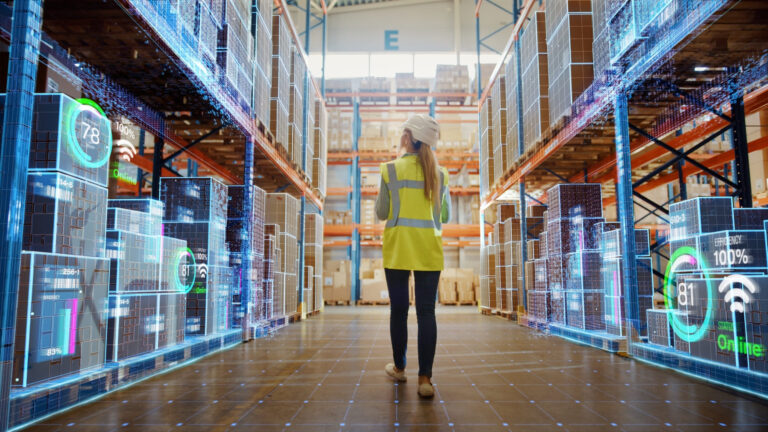Third-Party Logistics (3PL) Warehousing and Distribution: Process and Tips

Ecommerce businesses rely on trusted partners to manage inventory and fulfill sales, with 3PL Warehousing and Distribution providers being key players in the process. A 3PL partner takes charge of essential supply chain operations such as inventory storage, order fulfillment, and shipping, allowing businesses to focus on what they do best.
Effective logistics management is vital to optimizing a business’s supply chain. By leveraging the expertise and systems of a 3PL, businesses can streamline operations and improve overall efficiency. Understanding the processes involved in warehousing services is crucial for maximizing the value of a 3PL partnership, ensuring smooth workflows and cost savings.
Incorporating efficient 3PL strategies can significantly enhance a business’s bottom line, reduce operational complexities, and improve customer satisfaction.
What is 3PL Warehousing and Distribution?
3PL (Third-Party Logistics) warehousing and distribution involves outsourcing logistics operations, including the storage, handling, and distribution of goods, to an external provider. A 3PL provider manages various supply chain functions such as receiving inventory, storing products, processing orders, packaging, and shipping. This approach offers businesses cost savings, scalability, expertise, and flexibility, as it allows them to avoid the expenses of managing their own logistics infrastructure while benefiting from the provider’s specialized knowledge and resources.
The Key Processes in 3PL Warehousing
Third-party logistics (3PL) warehousing integrates a range of operations designed to streamline inventory management, fulfillment, and distribution for businesses. These processes are essential for ensuring smooth and efficient supply chain management. Below are the key processes involved in 3PL warehousing:
Receiving Goods
The process of receiving goods begins as inventory arrives at the 3PL warehouse. Upon arrival, items undergo quality checks to ensure they are in good condition. This includes verifying quantities and inspecting products for damage. After passing quality checks, the items are logged into the Warehouse Management System (WMS), and unique identifiers (such as barcodes or RFID tags) are assigned. This system keeps track of the product location within the warehouse, streamlining the fulfillment services process.
Storage
Once goods are received and logged, they are stored in an organized manner. Depending on the nature of the products, various storage methods are employed. These can include pallet racking, shelving, or automated systems. The products are categorized by type, size, and frequency of use, with fast-moving goods placed in easily accessible locations. This organization ensures efficiency in warehouse operations, allowing raw materials and finished goods to be stored appropriately for easy retrieval when needed.
Inventory Management
Efficient inventory management is critical to ensure stock levels are accurately maintained. A Warehouse Management System (WMS) is used to monitor inventory in real-time, tracking product quantities and movement within the warehouse. The WMS helps maintain the right balance of stock, automatically generating restock alerts when levels fall below a certain threshold. Inventory data is continuously updated using barcode scanners or RFID systems, ensuring accuracy and preventing stock discrepancies. This system enhances overall logistics services, ensuring smooth operations throughout the warehouse. If a private warehouse is looking to monetize additional warehouse space, they will likely need to invest in a warehouse management system (WMS) designed for 3PLs.
Picking and Packing
When a customer places an order, the picking process begins. The order management system directs warehouse staff to retrieve the correct items from storage. A 3PL warehouse or fulfillment center uses barcode scanning and tracking technology to ensure accuracy and minimize errors. Efficient picking methods, such as wave or batch picking, help speed up the process.
After picking, the items are securely packed to protect them during shipping. A 3PL company selects packaging based on the product’s size, fragility, and branding needs. Cost-effective materials help reduce shipping costs while ensuring the order reaches the customer safely.
Shipping
Shipping is a critical phase in the 3PL warehousing process. A 3PL provider selects appropriate carriers based on factors like cost, delivery time, and destination. Shipping labels are generated, and tracking numbers are assigned to each order, enabling real-time tracking. Effective shipping strategies help optimize delivery routes and minimize costs while ensuring timely delivery. The 3PL ensures the chosen shipping method aligns with customer expectations and the nature of the products being shipped, contributing to high customer service standards.
Industries That Benefit from 3PL Services
Whether a business sells a single product or a diverse catalog, 3PL companies help streamline warehouse operations, order fulfillment, and shipping. Fast-growing and well-established brands across various industries rely on 3PL warehouses or fulfillment centers to handle logistics efficiently.
- E-commerce Businesses – Online retailers need efficient fulfillment services to store inventory, process orders, and ship products to customers. 3PLs help manage high order volumes, especially during peak seasons.
- Manufacturers – Companies producing goods, including raw materials suppliers, rely on 3PLs for storage, inventory management, and distribution.
- Retailers – Brick-and-mortar and omnichannel retailers use 3PLs to optimize inventory control and ensure timely replenishment.
- Food & Beverage – Businesses in this industry require specialized logistics services, such as temperature-controlled storage, to maintain product freshness.
- Pharmaceutical & Healthcare – These companies depend on 3PLs for secure handling, storage, and distribution of medical supplies and equipment.
- Automotive & Industrial – Warehousing and shipping large or heavy parts require expertise, which 3PL companies provide through specialized storage and transportation solutions.
- Subscription Box Companies – Businesses offering recurring shipments use 3PL warehouses or fulfillment centers to ensure timely and accurate order fulfillment.
Common Products Managed by 3PLs
Many businesses selling the following products rely on 3PL companies for streamlined logistics:
Nutraceuticals – Vitamins, supplements, and wellness products requiring careful handling.
Wine and Spirits – Alcoholic beverages that often need specialized storage and regulatory compliance.
Bulk Goods – Large-quantity shipments that require space optimization and efficient distribution.
Raw Materials – Supplies for manufacturers that need organized storage and just-in-time delivery.
Electronics – Fragile items that demand secure packaging and inventory tracking.
Pet Accessories – From food to toys, 3PLs help streamline shipping for pet product brands.
Apparel – Clothing and fashion items that require SKU-based inventory management.
Cosmetics – Beauty products that need proper storage conditions and precise order fulfillment.
General Merchandise – A broad category of consumer goods managed with scalable fulfillment services.
Cold Storage Products – Temperature-sensitive items, such as frozen or refrigerated goods.
Challenges in 3PL Warehousing and Distribution
While 3PL companies provide valuable logistics services, businesses often encounter challenges when outsourcing warehouse operations. Understanding these issues and implementing effective solutions can help maximize efficiency and reduce risks.
Lack of Visibility
Tracking inventory and shipments in real time can be difficult when working with a 3PL warehouse or fulfillment center. Without proper visibility, businesses may face stock discrepancies, delayed shipments, and customer dissatisfaction. To overcome this, companies should partner with 3PL providers that utilize advanced tracking systems, warehouse management software (WMS), and real-time analytics for improved transparency.
Scalability Issues
As businesses grow, their supply chain needs evolve. Some 3PL warehouses may struggle to accommodate sudden spikes in demand or seasonal fluctuations. To address this, businesses should choose 3PL companies that offer scalable solutions, such as flexible storage space, on-demand fulfillment, and adaptive shipping strategies.
Cost Management
Outsourcing logistics can seem costly, especially for businesses new to fulfillment services. However, partnering with a 3PL warehouse or fulfillment center often reduces long-term expenses by optimizing storage, transportation, and labor costs. Businesses can manage costs effectively by comparing pricing models, negotiating contracts, and utilizing data-driven insights to streamline operations.
Quality Control
Relying on third-party providers for customer service and order accuracy carries risks, including mispicks, damaged goods, and inconsistent packaging. To maintain high-quality standards, businesses should establish clear service level agreements (SLAs), conduct regular audits, and collaborate with 3PL companies that prioritize quality assurance through automated systems and rigorous inspections.
Expert Tips for Success in 3PL Warehousing and Distribution
Optimizing warehousing and distribution is crucial for businesses in a 3PL setup. By adopting best practices, companies can improve efficiency, reduce costs, and enhance customer satisfaction. Here are actionable tips to streamline logistics operations:
Using Technology
Warehouse Management Systems (WMS), barcode scanners, RFID, and automation help streamline operations by improving inventory accuracy and reducing errors. Technology also enables real-time tracking and data-driven decisions, leading to smoother operations.
Space Utilization and Layout Optimization
Maximize storage by using vertical space and optimizing picking routes. A well-designed warehouse layout improves product flow, reducing time spent on picking and packing.
Inventory Forecasting and Planning
Accurate demand forecasting helps maintain optimal inventory levels, preventing stockouts and overstocking. This ensures smoother operations and lowers holding costs.
Shipping Optimization
Reduce shipping costs and delivery time with route optimization, carrier negotiations, and multi-modal transportation. Efficient shipping boosts delivery speed and customer satisfaction.
Packaging Efficiency
Optimize packaging to reduce waste and costs. Streamlined packing speeds up order fulfillment, and sustainable packaging aligns with customer preferences.
Customer Communication and Real-Time Tracking
Provide real-time tracking and proactive communication to improve customer experience and reduce service inquiries. Keeping customers informed builds trust and satisfaction.
Handling Returns
Efficient reverse logistics streamline returns, ensuring quick processing and minimal operational disruption. A smooth returns process enhances customer satisfaction.
Building Strong Partnerships
Foster collaborative relationships with 3PL providers for better communication, flexibility, and problem-solving. Strong partnerships lead to more efficient warehousing and distribution.
How to Choose the Right 3PL Provider
Assessing Service Offerings
When choosing a 3PL, ensure they offer services like international shipping, inventory management, order fulfillment, and specialized storage (e.g., temperature-controlled warehousing). Consider additional services like packaging, cross-docking, and returns management that can streamline your logistics.
Evaluating Experience
Look for a 3PL with industry experience, particularly in your sector. Their expertise will ensure they understand specific challenges, regulations, and best practices, enabling them to deliver tailored solutions for your business.
Technology Capabilities
Choose a provider with up-to-date technology for tracking, inventory management, and real-time updates. A robust Warehouse Management System (WMS) and integration with your systems will enhance efficiency and visibility across your supply chain.
Cost vs. Value
Balance pricing with value. Consider not just the cost, but also hidden fees like storage charges and handling costs. A higher-priced provider may offer greater efficiency, better technology, and enhanced customer service that can save you money in the long run.
Customer Reviews and Reputation
Research customer feedback and case studies to assess the 3PL’s reputation. Look for reviews on reliability, communication, and how they handle issues, ensuring the provider is a trustworthy long-term partner.
The Future of 3PL Warehousing and Distribution
The future of 3PL warehousing is evolving with technology and sustainability at its core. Automation, AI, and eco-friendly practices are reshaping how warehouses operate to meet growing demand and environmental goals.
Automation: Streamlining Operations
Robots for picking, packing, and sorting goods are reducing manual labor and improving speed and accuracy in warehouses. Automated systems like AMRs and AGVs optimize material handling, enabling quicker order fulfillment and increased operational efficiency.
AI: Improving Forecasting and Management
AI enhances demand forecasting and inventory management by analyzing data to predict trends and optimize stock levels. It also improves route planning, making transportation more efficient and reducing costs across the supply chain.
Sustainability: Green Practices in Warehousing
Sustainable practices, such as eco-friendly packaging and energy-efficient warehouses, are gaining traction. 3PL providers are adopting renewable energy, smart lighting, and recyclable materials, reducing waste and aligning with consumer demands for greener solutions.
Optimize Your 3PL Operations Today!
In conclusion, optimizing your 3PL warehousing and distribution processes is essential for staying competitive in today’s fast-paced logistics industry. Strategically located warehouses make it possible to deliver orders to 96% of U.S. homes within two days. By implementing the expert tips provided and addressing the challenges and solutions discussed, businesses can streamline operations, reduce costs, and enhance efficiency.
It’s time to evaluate your current 3PL strategy and explore potential improvements. Whether you’re seeking better inventory management, more flexible warehousing solutions, or improved distribution processes, working with an expert provider can make all the difference. Reach out to discover how optimizing your 3PL operations can lead to greater success and long-term growth.
Frequently Asked Questions (FAQ) – OLIMP Warehousing
Q: What is 3PL warehousing and distribution?
Third-party logistics (3PL) warehousing and distribution means outsourcing storage, inventory management, and shipping tasks to an external provider. A 3PL provider operates warehouses or fulfillment centers to receive, store, and ship products on your behalf.
Q: What is the difference between a warehouse and a 3PL?
A warehouse simply stores goods, but a 3PL offers additional services beyond storage – such as order fulfillment, inventory tracking, packaging, and transportation. In other words, a 3PL is an integrated logistics partner, not just a storage space.
Q: What is 3rd party warehousing?
“3rd party warehousing” is another term for 3PL warehousing. It refers to using an outside company’s warehouse facilities and staff to handle your inventory and fulfillment needs, rather than managing your own warehouse internally.
Q: Why use third-party warehousing companies instead of in-house?
Outsourcing to 3PLs reduces capital expenses (no need to build or lease your own warehouse), provides expertise and technology, and offers flexibility to scale. It lets businesses focus on core operations while experts handle the complexities of logistics.
You may be interested in

Types of Logistics Services – A Complete Guide for Modern Businesses
Efficient logistics is the backbone of today’s economy. Whether you operate an e‑commerce shop shipping parcels worldwide or a manufacturer moving raw materials across borders, the way you manage logistics services directly influences costs, customer satisfaction and growth. This guide demystifies the different types of logistics services and shows you how to select the right […]

Medical Logistics: Key Strategies & Solutions for Healthcare Supply Chains
Medical logistics (also called healthcare logistics) is the specialized coordination of medical supplies, equipment, and pharmaceuticals from manufacturers through the supply chain to healthcare providers and patients. In other words, it ensures that hospitals, clinics, pharmacies, and patients get the right medical products at the right time. Because these goods are critical to patient care, […]

Retail Logistics Solutions: Key Strategies for Retailers
Retail logistics is often described as the backbone of a seamless customer experience. In practice, retail logistics covers every step of getting products from manufacturers or suppliers into store shelves or directly into customers’ hands. It includes transportation, warehousing, inventory management, order fulfillment, and delivery, ensuring the right products are in the right place at […]
Ready to streamline your warehousing needs?
Request a quote today and discover how OLIMP's tailored solutions can optimize your operations